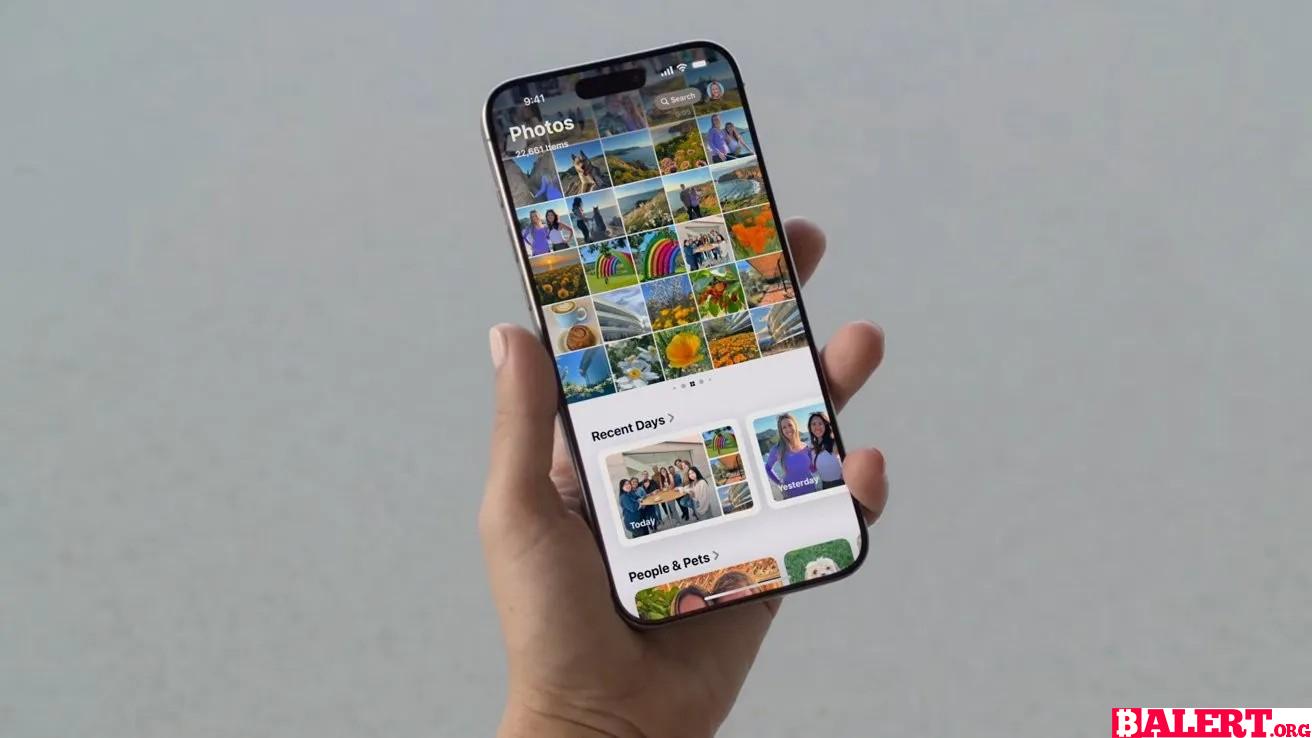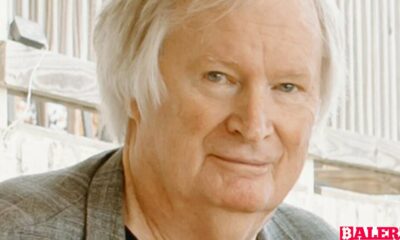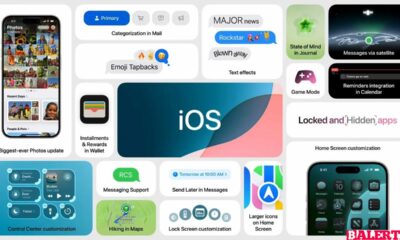Tech
Challenges and Future Directions for Urbit amidst Leadership Changes
Explore the challenges and future directions of Urbit as it navigates significant leadership changes. Understand the impact on its development, community engagement, and strategic goals in an evolving digital landscape.

Challenges Facing Urbit: A Deep Dive
By all measures, Urbit has been navigating turbulent waters recently. The Urbit Foundation, a nonprofit organization guiding the development of this ambitious 22-year-old software initiative aimed at reconstructing the internet from the ground up, finds itself in a precarious financial situation, with a runway that could be counted in mere months. Over the past year, the ecosystem has witnessed what has been termed a “mass exodus” of startups and developers, as noted by William Ball, one of the foundation’s three board members, during a call with developers last Thursday.
The user experience within the network remains cumbersome, a quirk that some may find endearing but which poses a significant hurdle for a project aspiring to attract a broad, mainstream audience akin to that of the internet. The value of a star, the second-largest unit of digital real estate on the platform, has plummeted from a high of around $27,000 in late 2021 to just over $1,000 today, according to data from Dune Analytics.
In light of these challenges, the Urbit board recently made sweeping changes. They dismissed Josh Lehman, the foundation’s executive director since 2021, and appointed Christopher Colby, the founder of a prediction market startup called Alphabet, as interim director. Furthermore, the board abandoned a fundraising initiative, initially supported by Lehman, which aimed to develop a new layer-2 blockchain on top of Ethereum using a software development kit from the Cosmos ecosystem.
Perhaps most surprising to both Urbit enthusiasts and outsiders alike was the board’s decision to reinstate Curtis Yarvin, the project’s founder, who had stepped away in 2019. Yarvin is widely recognized for his unconventional political writings – but we’ll touch on that in a moment (Just a bit, promise). Though he does not hold an official position within the foundation, he will lead strategic initiatives moving forward. “We don’t give a [expletive] about titles,” Yarvin stated in an interview with CoinDesk. “We’re here to fix this.”
This shakeup has unsettled some prominent figures within the Urbit community. Several key players, including Chief Technology Officer Ted Blackman and senior software engineer Liam Fitzgerald, have opted to resign from the foundation. Blackman clarified that although he is no longer affiliated with the nonprofit, he intends to continue his work on Urbit as an unpaid open-source developer while launching an unrelated consulting venture to sustain his finances.
“Most of the core developers, including myself, are dedicated to advancing Urbit, irrespective of financial remuneration,” Blackman conveyed to CoinDesk. “Claims of Urbit’s demise have been greatly exaggerated.” Fitzgerald, who expressed his dissatisfaction with the board’s erratic communication regarding these changes, shared a more tentative outlook but did not dismiss the possibility of continuing his work on Urbit outside the framework of the foundation: “It’s a possible direction,” he remarked.
Yarvin has indicated that part of his focus will be on managing community relations. “There are a lot of ruffled feathers out there,” he admitted during an extensive, hours-long call with developers. “We’re in the process of unruffling them.” Nonetheless, he cautioned that some proverbial eggs may have to be broken in the pursuit of progress. “We have to fix this now,” he emphasized. “That will likely limit our ability to tackle this collegially.” Just a few days later, Ball informed CoinDesk that the foundation would retain half of its staff, observing that “morale is much higher now.”
What Happened to Urbit?
To simplify, Urbit is a decentralized network of “personal servers” with the grand ambition of restoring user sovereignty on the internet, which has increasingly become reliant on massive, politicized platforms like Facebook and Google for data hosting. The project underscores its lofty goals by employing its own programming languages (Nock and Hoon), a unique operating system (known as Arvo), and its own identity framework (Azimuth). This system is undeniably unconventional, exemplified by the naming conventions: for instance, this reporter’s digital identity on the network is identified as ~fodrex-malmev. Enthusiasts have embraced this eccentricity, dubbing themselves “Martians.”
Currently, the network primarily facilitates direct messaging, group chats, and the ongoing development of Urbit itself. However, the ultimate vision is for virtually all online activities to eventually take place within the Urbit ecosystem. Yarvin, a veteran of Silicon Valley’s dotcom boom, initiated work on Urbit back in 2002. In 2013, he established a company named Tlon (inspired by a Jorge Luis Borges story) to further develop the software. Although Yarvin departed from Tlon in 2019, he retained significant ownership of the namespace, or digital real estate, on the network.
By 2022, Urbit had garnered notable investment capital, along with a growing number of startups, developers, and a burgeoning buzz in the community – likely due, at least in part, to its idiosyncratic nature. The foundation was established to take over core development from Tlon, which had shifted its focus to product development. Writers and artists flocked to Assembly, the community’s annual conference, to speak alongside tech innovators, creating an atmosphere brimming with enthusiasm.
However, Yarvin suggests that this was also when the Urbit community began to falter. “A lot of the flattery went to everyone’s heads,” he reflected in an interview with CoinDesk. “We kind of ended up pretending, not just to others but to ourselves, that the system was more developed than it truly was.” Urbit had consciously opted out of participating in the initial coin offering frenzy of 2017-2018, which meant it never amassed a significant financial reserve. Yarvin argues that the project fell into a similar trap as many cryptocurrency teams, stating, “We funneled energy into building an ecosystem under the assumption that we were ready to build one – there’s no way to reverse that now. The result has been a lot of dead code and many disappointed individuals.”
Lehman, the former executive director, noted that one of the challenges faced was the foundation’s reliance on selling “galaxies,” which are the largest units of address space on the network, to venture capital investors to fund core development. “The difficulty of being effectively venture-funded is that venture capital demands growth,” Lehman explained. “As the team driving core development, we’re somewhat detached from the levers that drive growth, which rely on product companies, many of which have exited the ecosystem.” One such company, Kinode (previously known as Uqbar), is aiming to develop a similar peer-to-peer computing infrastructure but with a more conventional software stack, including the Rust programming language. “Over time, we realized that the software that constituted Urbit simply wouldn’t deliver,” shared Ben McCormick, a consultant at Kinode. “Many others echoed the sentiment: ‘What if someone created Urbit, but made it more traditional?’ And that’s how we ended up pursuing that path.”
Yarvin praised Lehman but noted that his management style was more suited for an established organization than for a nascent venture that should always operate under the assumption that it is fighting for survival, regardless of how much capital it has raised. “Josh is an excellent peacetime CEO,” Yarvin commented. “But the Urbit project is still a startup. We remain in a default-dead state, and we will perish if we cannot make this a concrete reality. That requires a wartime CEO.” Lehman expressed his intention to continue contributing to Urbit, asserting, “Many individuals are highly motivated to keep the project alive, and I am among them.”
What’s Next for Urbit?
When asked how he plans to extend the foundation’s runway, Yarvin responded, “We need to develop something that is investable, and we are doing that rapidly. Creating a project that people genuinely love and addressing the tokenomics seriously will likely suffice.” Part of Yarvin’s strategy involves accelerating Urbit’s growth as an identity system and social network without waiting for the slower progression of the operating system.
In a draft thread on X (formerly Twitter) shared with CoinDesk, Yarvin proposed that Urbit identities could soon function as a decentralized single sign-on for websites, akin to the Ethereum Name Service (ENS). He pointed out that while ENS handles are unlimited and require renewal every few years, Urbit identities are scarce, and users own them outright rather than merely leasing them. Users would still have the option to utilize decentralized servers running on the Arvo operating system, but this would no longer be a prerequisite for accessing Urbit.
“Urbit as a society comprises those who engage with their Urbit identities,” Yarvin explained in the interview. “Fostering that society essentially means inviting individuals into this realm. It doesn’t necessarily correlate to any specific technical advancement.” To facilitate the expansion of the social network and to mend the address space market, the foundation plans to implement changes to Azimuth, the Ethereum smart contract that serves as the record keeper for Urbit.
Azimuth initially operated on the main Ethereum network, which became prohibitively expensive for tracking ownership of namespace as gas fees surged during the 2020-2021 crypto bull market. To mitigate this issue, Azimuth transitioned to its own layer-2, a “naive rollup,” in 2021. However, this approach came with its own set of challenges. A planet, or user identity, issued from the rollup layer cannot be registered on the main Ethereum chain. (Imagine transferring ownership of a house but having no way to notify the county clerk.)
Rather than pursuing Lehman’s plan to develop another Ethereum layer-2, Yarvin has proposed migrating Azimuth to an existing one. While no commitments have been made, the team is leaning towards Base, the network developed by the crypto exchange powerhouse Coinbase, which is known for its low transaction fees. Regardless of the eventual destination, the new Azimuth contract would issue fungible “visa” tokens, a portion of which could be traded on centralized or decentralized crypto exchanges. Visa tokens would be redeemable for newly created, non-fungible planets on the Urbit network, though not all at once.
Some visa tokens would “activate” and become immediately redeemable, while a larger portion would become available one to two years post-issuance, an even larger number after five years, and still more after a decade. The longer the waiting period, the lower the price of a visa token is expected to be. The objective is to incentivize long-term commitment without locking users into holding tokens. As Yarvin articulated, “Individuals with diamond hands are rewarded for deeper investment, while those wishing to exit have a liquid way to do so, but they all must squeeze through the same narrow opening.”
About That Political Controversy
For an extended period, Urbit found itself overshadowed by Yarvin’s right-wing ideology, which is reminiscent of Frederick the Great rather than Barry Goldwater, articulated in lengthy, dense blog posts dating back to 2007 under the pseudonym Mencius Moldbug. In 2015, a technical conference rescinded his speaking invitation. The following year, another tech conference faced sponsor withdrawals and nearly faced cancellation due to his speaking engagement, amid concerns that his presence might render attendees feeling “unsafe.” (Perhaps some attendees feared he would bore them to tears with lengthy readings of his posts or subject them to his poetry.) This year, that same conference hosted a talk by Fitzgerald from the foundation with hardly a ripple of controversy, suggesting that Urbit, at least, is no longer viewed as radioactive.
Although the cancel culture of the late 2010s and early 2020s may be waning, bringing Yarvin back represents a calculated risk for Urbit, as noted by board member William Ball during the developer call. “Upon hearing that Curtis was back, my initial reaction was, ‘Wow, this guy’s going to derail everything,'” Ball later confessed to CoinDesk. However, he and the other board members were pleasantly surprised after discussions with Yarvin. “I genuinely felt, ‘Here’s a man who has evidently matured over the past five years,’ or perhaps I simply didn’t know him well enough,” Ball remarked. He also noted Yarvin’s awareness of practical commercial realities, combined with a commitment to ensuring essential computer science research is insulated from commercial pressures.
Yarvin asserted that his polarizing reputation may have become an asset to the Urbit community, as it helps filter out individuals more interested in causing disruptions than in contributing productively. “The result of my political reputation is that toxic left-wing individuals tend to avoid Urbit, while toxic right-wing individuals must be reminded to leave,” he stated. To clarify, unlike centralized platforms, trolls cannot be expelled from the Urbit network; they are simply excluded from curated, self-selecting communities. “If Urbit as a society has any political mission, it is depoliticization,” Yarvin concluded. “That mission is to create a genuinely safe space for everyone, and when I say everyone, I mean everyone. And that’s something the world desperately needs.”
Tech
Tesla Semi Fire: NTSB Preliminary Report Released
The NTSB’s preliminary report on the Tesla Semi fire has been released. This content includes important information about the details of the incident, the causes of the fire, and Tesla’s safety measures. Explore the impact on Tesla’s electric vehicles and its future steps.

The National Transportation Safety Board (NTSB) released a preliminary report stating that a Tesla Semi electric truck in California required firefighters to use “50,000 gallons” (approximately 190,000 liters) of water to extinguish a roadside fire. Firefighting teams also deployed an aircraft to drop fire retardant on nearby areas as a precautionary measure to control the fire.
The accident occurred on August 19 at 3:13 AM local time on the I-80 highway east of Sacramento. The electric truck went off the road while navigating a curve, collided with a roadside boundary marker, and then struck a tree, coming to a stop. Fortunately, the driver was not injured in the accident; however, considering their health condition, they were taken to the hospital.
The Tesla Semi’s large 900 kWh battery caught fire upon impact, and toxic smoke began to spread during the fire. While the fire continued with temperatures reaching up to 538°C, firefighters worked intensively to cool the blaze with water. However, due to the fire’s effects, the vehicle continued to burn until late in the afternoon. Meanwhile, Tesla sent a technical expert to the scene regarding fire safety and high voltage hazards.
The highway reopened to traffic at 7:20 PM local time, 16 hours after the accident. The NTSB, as an organization that can only make recommendations and cannot enforce regulations, sent a team to the area for investigation purposes. This major accident raised several issues, including dangerously hot fires and toxic smoke, which will attract the attention of many international organizations.
The NTSB had previously stated in 2021 that fires in the batteries of electric vehicles pose serious risks to emergency response teams and that the guidelines provided by manufacturers for such fires are inadequate.
Tech
New Leaks and Features About the Samsung Galaxy S25 Ultra
Discover the latest leaks and features about the Samsung Galaxy S25 Ultra. Equipped with new technologies and advanced features, this smartphone elevates the user experience to a new level. Check it out for details!

New Leaks About Samsung Galaxy S25 Ultra
Samsung is expected to introduce the Galaxy S25 Ultra along with the Galaxy S25 series at the beginning of 2024, likely in January. Although no official announcement has been made yet, leaks regarding the upcoming flagship continue to spread rapidly on the internet. Notable leak source IceUniverse shared several new visuals of the Galaxy S25 Ultra in a post on the X platform. These visuals reveal the design differences between the Galaxy S25 Ultra and the Galaxy S24 Ultra.
One of the notable features in the leaked images of the Galaxy S25 Ultra is the rounded corners of the phone. In contrast, this year’s Galaxy S24 Ultra has quite sharp corners, which has led to feedback from some users indicating discomfort while holding the device. Previous leaks have suggested that the Galaxy S25 Ultra may be somewhat larger.
A tweet shared by IceUniverse: Galaxy S25 Ultra Image
According to leaks, the Galaxy S25 Ultra is expected to be thinner and lighter compared to previous models. In August, rumors emerged that the upcoming Galaxy S25 Ultra would be lighter than its competitors, with a weight of under 221 grams.
Another image featured in IceUniverse’s post shows close-ups of the sides of both next year’s expected flagship phone and Samsung’s current flagship. In this image, the side of the Galaxy S25 Ultra appears flatter with rounded corners. While these changes may not create a major revolution, they will generally positively affect the feel of the phone in hand.
Looking at other rumors about the Samsung Galaxy S25 Ultra, it is expected that the company will offer top-tier screen and camera upgrades next year. Additionally, there is a strong expectation that the satellite connection feature will also be introduced alongside the Galaxy S25.
Tech
iOS 18 Officially Released: Innovations and Features
iOS 18 has been officially released! This update, packed with new features and innovations, elevates the user experience to the next level. Check out our article for details and discover the new offerings of iOS 18!

iOS 18 Officially Released: Here Are the Innovations!

Apple officially launched iOS 18 yesterday, as promised. After a long beta testing phase, this update brings many exciting new features for iPhone users.

New Features in iOS 18
- Advanced Customization Options on the Home Screen: With iOS 18, users can now arrange app icons freely without sticking to the traditional grid layout. Additionally, there’s an option to change the colors of the icons and adjust their darkness levels. In short, you are no longer bound to a boring layout. It raises questions why Apple waited until 2024 to offer this feature.
- Revamped Control Center: The Control Center is completely redesigned in iOS 18. Users will be able to group controls more comfortably, and developers can easily add controls from their applications. Also, there’s an option to divide the Control Center into pages, allowing different controls on each page.
- RCS Messaging Support: With iOS 18, Apple introduces Rich Communication Services (RCS) messaging support. Users can add various effects to their texts and react with new emojis for more colorful responses.
- Updated Photos App: The Photos app is presented with a new opening page and a modern layout. Users can now browse photos by time, people, and many other criteria, reorder media files, and explore more with the “Collections” feature.
- App Lock Feature: Users can now lock specific applications. For example, they can activate Face ID protection from the menu that appears when long-pressing an app icon. Thus, anyone wanting to open the app will have to pass the Face ID protection first.
- Apple Intelligence: One of the important features of iOS 18 is Apple’s artificial intelligence kit, Apple Intelligence. However, to fully benefit from this feature, you’ll need to wait for the iOS 18.1 update. More information about Apple Intelligence can be found here.
How to Install iOS 18?
- Open the Settings app.
- Tap on General.
- Select Software Update.
- Your iPhone will notify you that the new iOS 18 update is available.
- Click on “Download and Install” and follow the on-screen instructions.
Which iPhone Models Can Install iOS 18?
- iPhone XR, XS, and XS Max
- iPhone 11
- iPhone 11 Pro and 11 Pro Max
- iPhone SE (2nd generation)
- iPhone 12 mini and iPhone 12
- iPhone 12 Pro and iPhone 12 Pro Max
- iPhone 13 mini and iPhone 13
- iPhone 13 Pro and iPhone 13 Pro Max
- iPhone SE (3rd generation)
- iPhone 14 and iPhone 14 Plus
- iPhone 14 Pro and iPhone 14 Pro Max
- iPhone 15 and iPhone 15 Plus
- iPhone 15 Pro and iPhone 15 Pro Max
- iPhone 16
- iPhone 16 Plus
- iPhone 16 Pro and iPhone 16 Pro Max
-

 Business5 months ago
Business5 months agoObituary: Dan Collins
-

 Business3 months ago
Business3 months agoThe Significance of Jackson Hole: A Central Banking Tradition
-

 Gaming5 months ago
Gaming5 months agoMore than a thousand students vowed not to work for Amazon and Google due to the Nimbus Project.
-

 World5 months ago
World5 months agoRussia and North Korea Strengthen Defense Ties
-

 Business5 months ago
Business5 months agoJump Crypto Invests $10 Million in Pro-Crypto PAC
-

 Tech2 months ago
Tech2 months agoNew Leaks and Features About the Samsung Galaxy S25 Ultra
-

 Article5 months ago
Article5 months agoCreative Design Applications Developed with Artificial Intelligence
-

 Gaming5 months ago
Gaming5 months agoThe Inspirational Success Story of Avon’s Founder Who Sold Books Door to Door











